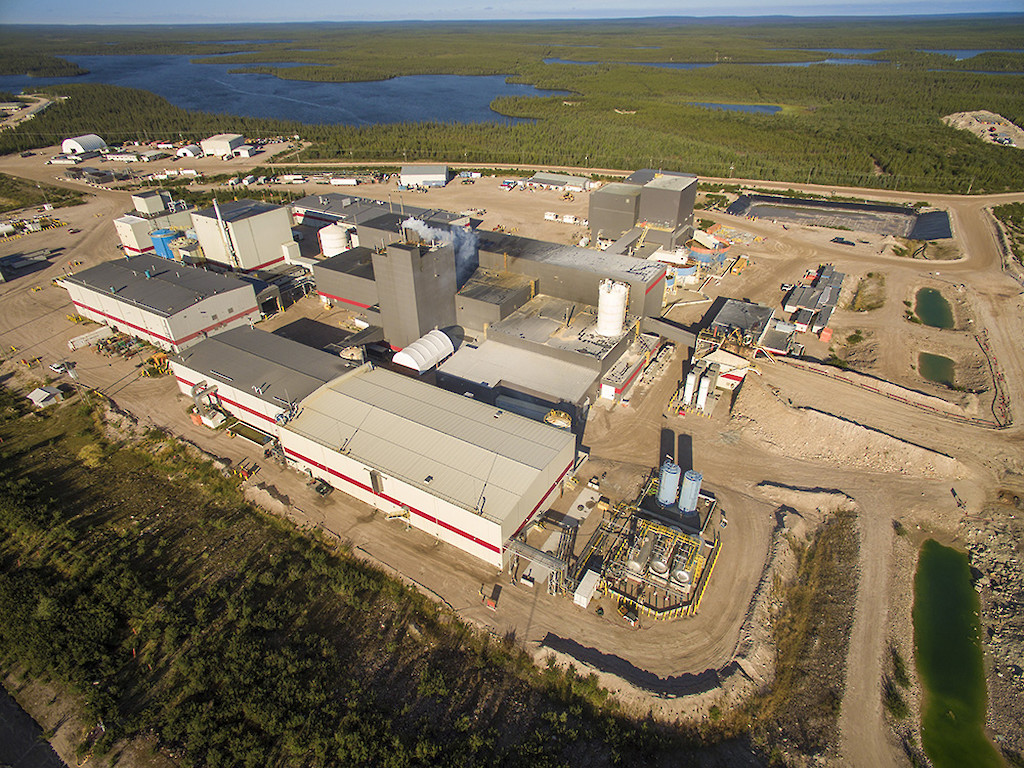
The McClean Lake uranium mine, located in the Athabasca Basin of northern Saskatchewan, is set to resume production in 2025 after operations were suspended in 2008 due to weak uranium prices. Joint venture partners Denison Mines and Orano Canada announced on Wednesday that mining activities will restart at the McClean North deposit, with an estimated 800,000 pounds of uranium output expected in 2025.
The McClean Lake mine is owned by the McClean Lake Joint Venture (MLJV), in which Denison Mines holds a 22.5% stake and Orano Canada, as operator, holds a 77.5% interest. The partners have continued exploration activities and invested in developing the patented Surface Access Borehole Resource Extraction (SABRE) mining method, which is designed to selectively extract high-grade uranium ore.
Preparations in 2024 will involve getting the existing SABRE mining infrastructure and equipment ready for continuous commercial operations. MLJV will also install eight pilot holes for the first mining cavities to be excavated.
Beyond 2025, the joint venture partners have identified the potential for around 3 million additional pounds of uranium production from 2026 to 2030, drawing from both the McClean North and Caribou deposits at the mine site.
The decision to restart operations reflects improving project and uranium market fundamentals, according to the companies. Alexander Pearce, a uranium analyst with BMO Capital Markets, noted the restart would help provide modest near-term cash flow for Denison as it develops the Wheeler River project.
Orano Canada President and CEO Jim Corman said the joint venture’s ability to capitalize on strengthening nuclear and uranium markets is due to long-term R&D investments enabling continued activities at McClean Lake.
The McClean Lake property, located approximately 750 km north of Saskatoon, consists of 4 mineral leases covering 1,147 hectares and 13 mineral claims over 3,111 hectares.
Uranium prices recently hit their highest levels in over 16 years, largely driven by major global producer Kazatomprom highlighting potential supply risks. This price resurgence is expected to incentivize restarts of idled uranium mining capacity globally.
Jim Corman, Orano Canada’s President and Chief Executive Officer, commented in a press release: “Our current ability to capitalize on the strengthening uranium and nuclear markets is the result of a long-term investment in R&D within Orano and the MLJV to secure continued activities at the McClean Lake operation well into the future. The groundwork we do over the course of 2024, is expected to put the MLJV in position to see SABRE in action and to commence production in 2025. It is anticipated that the McClean Lake mill will have sufficient capacity to process this ore, while continuing with committed planned production from Cigar Lake. It’s an exciting time for employees, partners, and the industry as we return to a focus on growth.”
David Cates, Denison’s President and Chief Executive Officer, also commented in the press release: “The restart of uranium mining at McClean Lake is a notable milestone for the MLJV and Denison. Mining at McClean Lake was suspended in 2008 in response to declining uranium prices. During the interim 15 years, the MLJV invested in the development of a proprietary mining method designed to selectively extract high-grade Athabasca Basin uranium ores from surface. The successful mining test of the SABRE method in 2021 provided the MLJV with important information about the productivity and cost of SABRE operations. This information suggests an incentive price meaningfully lower than current uranium prices, which has provided the JV with a strong basis to make a restart decision for mining at McClean Lake.
The McClean Lake mine first opened in 1999 and produced over 50 million pounds of uranium through its suspension in 2008. The planned restart marks a major step in re-establishing northern Saskatchewan as a key uranium mining region amid rising market demand.



 Follow us on Twitter
Follow us on Twitter Become our facebook fan
Become our facebook fan










Comments are closed.